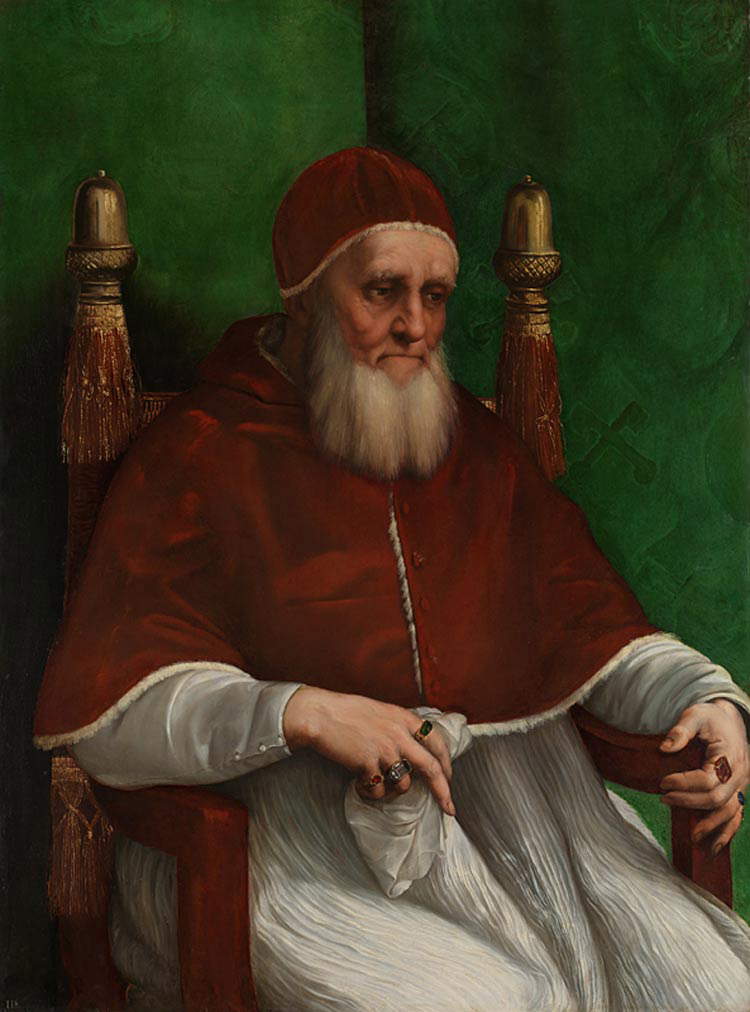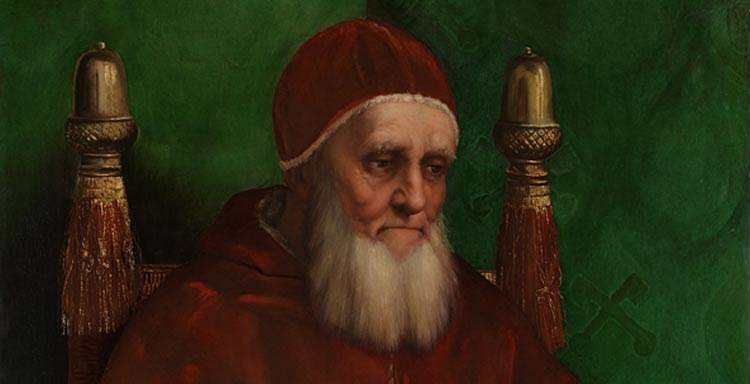An exhibition in Bologna on Julius II and Raphael with a portrait of the pope on loan from London
The Portrait of Pope Julius II della Rovere, one of Raphael Sanzio’s masterpieces, will be exhibited, in an exceptional event, at the Pinacoteca Nazionale in Bologna, and will be the highlight work of the exhibition Julius II and Raphael. A New Season of the Renaissance in Bologna, open from October 8, 2022 to February 5, 2023, curated by Daniele Benati, Maria Luisa Pacelli and Elena Rossoni. Julius II was the pontiff who subjected Bologna to the State of the Church, profoundly changing the course of the city’s history and initiating, also thanks to the presence of artists such as Bramante and Michelangelo, a new season of the Renaissance in the city. The celebrated portrait was granted to the Bolognese exhibition by the National Gallery in London, which, in turn, had obtained theEcstasy of Saint Cecilia by the Urbino master from the Bolognese institution for the exhibition held in London.
The Portrait of Julius II is an oil on panel painting (108.7 by 80 cm) commissioned by Pope Della Rovere from Raphael and made in Rome around 1511-1512. In addition to the version preserved at the National Gallery in London, several copies are known, some anonymous, others by important artists such as the one attributed to Titian, preserved at the Galleria Palatina in Florence. These specimens testify to the interest in the personage effigy and Raphael’s interpretive model, which remained dominant in the portraiture of popes for most artists in the following centuries.

Giorgio Vasari and Giovanni Paolo Lomazzo speak of a portrait of the Pope by Raphael found in the basilica of Santa Maria del Popolo in Rome. The work, which passed into the Borghese collection in 1608, had later been sold to Emperor Rudolph II, and traces of it had been lost ever since. In 1976 a scholar at the National Gallery in London solved the riddle of the painting, which had been purchased in 1824 by the museum and had been in England since the late 18th century. In fact, an inventory number, 118, was found on the panel, which was found to correspond with that of the Scipione Borghese Gallery in 1693. Scientific analysis has since confirmedRaphaelesque autography, and a restoration has restored the pictorial quality of the work, hitherto hidden under layers of yellowed varnish.
“What is striking about the portrait,” stresses Maria Luisa Pacelli, Director of the Pinacoteca Nazionale and co-curator of the Bolognese exhibition, “is the interpretation that Urbino proposes of the Pontiff and the attention to his psychology. It is a compositional model that breaks with tradition: here Raphael captures Julius II in half-figure, somewhat curved and turned to the right, present, though absorbed and not at all hieratic. The Pope seems to be perfectly at home among the symbols of his function, but as if detached from them. A man of God and power, but perfectly aware of the difficulties of his earthly reign. Finally, let us not forget that the figure of Julius II had a great impact on Bolognese society and art, while the influence of Raphael’s work left a very lasting mark on the city’s artists.”
 |
| An exhibition in Bologna on Julius II and Raphael with a portrait of the pope on loan from London |
Warning: the translation into English of the original Italian article was created using automatic tools. We undertake to review all articles, but we do not guarantee the total absence of inaccuracies in the translation due to the program. You can find the original by clicking on the ITA button. If you find any mistake,please contact us.





























